
Posted by John Keller
I ran across a new study about "hybrid war," which would combine elements of conventional nation-on-nation conflict, as well as non-state terrorism, insurgency, and even crime. At the heart of hybrid war is a merging in the forms of conflict such that it would blur the distinction between war and peace.
The first thing I thought of is a question: what would be the best strategy in hybrid warfare? Then it came to me: go to war, yet convince the enemy you're still at peace. Keep the enemy believing you're still at peace until you reach your core objectives. Win, in other words, before the enemy even knows he's in the game.
In that context, it doesn't require a look farther than today's headlines to cause concern. Take a poll of all the people in the United States, Canada, Europe, and Australia. Ask a simple question: are we are war? I think a third would say yes, a third would say no, and a third would say I don't know.
Are we at war today? If so, with whom? Where is the enemy? Is it Radical Islam, a belligerent China, inner-city street gangs, drug dealers, organized crime, illegal immigrants, multinational corporations, militant labor unions, Republicans, Democrats, the rich, the poor?
Does everyone agree? No? Sounds pretty blurry to me. I don't think hybrid warfare is something sometime in the future; I think it's here with us right now. The lack of resolution in Western culture today pretty much illustrates the point. If anyone has declared war on us, it's probably in their best interests to keep mum about it.
The study that got me thinking is entitled Conflict in the 21st Century: The Rise of Hybrid Wars, from the Potomac Institute for Policy Studies in Arlington, Va. The author is Research Fellow Frank Hoffman.
I think it's easy to dismiss and ignore potential signs of hybrid war merely as civil unrest, random crime, restive and misunderstood religions, or regional conflicts that don't concern us. Maybe I'm wrong, but I think this is the biggest threat of hybrid warfare -- the possibility that we might not be in the game until it's too late.
The kinds of technologies we all know well also play a big role in hybrid warfare, but not in the ways you might think. Hybrid warfare strikes at an enemy's weaknesses and bypasses its strengths. We're not talking about tank warfare in Europe or the Middle East here. We're talking about computer networks and power grids right here at home.
Hybrid warfare wouldn't be all about high-technology weaponry, either. As Hoffman points out in the study, it could combine Microsoft with machetes.
People talk about the possibility of a dirty bomb detonation in the middle of a populated metropolis. Few talk about the possibility of an electromagnetic pulse (EMP) weapon that could disable every electrical system within a hundred miles. Think about that: computers, cars, light bulbs, TVs, radios, electric crock pots -- all dead.
I think a dirty bomb attack on New York City would make us mad. An EMP bomb that delays dinner and cancels evening television all along the Eastern Seaboard would be downright demoralizing.
About 2,700 years ago military strategist Sun Tzu said basically that the best military victory is where the enemy gives up without fighting. Just to provoke a thought, I'll ask again ...
Are we at war?

Posted by Courtney E. Howard
I was naive. Having lived three decades in New England, I thought New England weather was as crazy as it could get. Then I moved to the Northwest. My first summer in Spokane was marked by record temperatures in the triple digits. The autumn brought with it record rainfall and, just when I thought Washington winters were mild, 17 inches of snow dumps on Spokane Sunday night. As if that weren't bad enough, the 10-day forecast calls for snow storms off and on flanked by zero-degree temperatures.
Snoqualmie Pass has logged five feet of snow in just five days. Closure of such passes has detrimentally affected the state's commerce, says Governor Christina Gregoire, who has declared a state of emergency in the state. One county is even asking for assistance from the Department of Homeland Security!
I never thought I'd long for New England winters, but I've learned to never say "never."
I'm holed up in the house for now, but I'm making my reservations for the Military & Aerospace Electronics Forum in sunny San Diego. Are you also planning to soak up some California sun, and some great industry and technology information, at the Forum in March?
There's just no way to understate the military's future need for high-power electronics. Electric-drive vehicles, all-electric aircraft, and aircraft carrier catapults are just some of the potential applications.
Yet the emergence of electromagnetic railguns has raised the bar dramatically for high-power electronics. The U.S. Navy plans to use these weapons aboard future surface warships to shoot non-explosive shells at a speed of March 8 -- eight times the speed of sound, or roughly 6,000 miles per hour.
At that speed you don't need explosives; the kinetic energy alone is enough to make vehicle-size objects disappear in balls of fire. Forget artillery shells and missiles. Fire an electromagnetic railgun at a target 10 miles away and the projectile gets there in less than six seconds. That's not much time to react. You'd never hear it coming; you'd be lucky even to see it.
Now get this: the Navy wants electromagnetic railguns with ranges of hundreds of miles. Shot a target 200 miles away and the projectile gets there in about two minutes. A Harpoon anti-ship missile would take about 22 minutes to fly that far. It's not hard to see how batteries of electromagnetic railguns -- especially those that could fire rapidly -- might be able to overwhelm enemy air defenses very quickly.
Believe this is science fiction? Think again. The Office of Naval Research has taken delivery of a functional, 32-megajoule Electro-Magnetic Laboratory Rail Gun from BAE Systems, and the gun will be demonstrated this week at the Naval Surface Warfare Center in Dahlgren, Va. The Navy envisions 64-megajoule electromagnetic railguns for future shipboard use.
The difficulty of deploying future electromagnetic railguns might not lie in the technology necessary to build these weapons, but in producing the incredibly large amounts of electricity necessary to operate them.
Think of the kind of electromagnetic railgun the Navy wants for future warships. It takes 64 megajoules to shoot it. That's equal to about 18 kilowatt hours, or about the same amount of power an average American household uses in an entire day. Those future warships carrying these kinds of weapons are going to need amazing power plants.
Think of the generators that will be necessary to operate the electromagnetic railgun. This requirement for electricity production is likely to have a profound influence over future ship design.
It looks like the designers of high-power electronics and components have their work cut out for them. Ready or not, industry, the Navy is going to need a lot of electrical power, and very soon. We wouldn't want those electromagnetic rail guns to be all dressed up and have nowhere to plug them in.
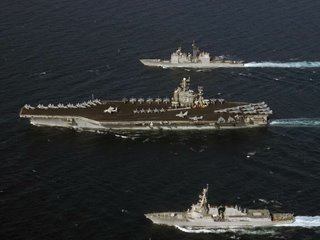
Posted by John Keller
The U.S. economy has run through nearly every powerful business sector to lean on to keep itself upright. Commercial technology seems to be played out. Housing -- long the mainstay -- is on its back. Consumer spending is staggering. What's left?
Defense spending, that's what. It's come to this.
With most business sectors at the end of their ropes, U.S. defense profits, sales, or both, apparently are on the upswing, according to an Aviation
Week and Space Technology blog by Joe Anselmo entitled Downturn? Not in Defense Profits. Writes Anselmo:
It certainly is a good time to be working in aerospace and defense, as opposed to banking or housing. The fourth quarter and full-year 2007 earnings results that companies are rolling out this week illustrate the degree to which military contractors are buffeted from the sputtering U.S. economy.
Anselmo points out that Lockheed Martin in the fourth quarter had flat sales but a 20 percent increase in net income. General Dynamics posted net income at the same time that is up 42 percent. Northrop Grumman had flat sales, yet a 10 percent gain in net income. Northrop Grumman over the full fiscal year had a 16 percent increase in net income and a 6 percent increase in sales. More good news is likely to come soon.
Contrast that with the dismal news we have been reading about the banking and housing industries. The defense industry, again, is looking like a winner.
It's funny, though. Defense spending only seems to be really great when most commercial industries have hit the skids. I sense from conversations this past week at the Photonics West trade show that electro-optics companies usually focused on commercial endeavors are giving surprisingly strong consideration to the military.
What this tells me is commercial technology might not be the best bet these days, and technology companies are looking for a safe harbor. When they do this they usually turn to the stable, predictable, and large defense budgets.
When's the last time they did this? It was in the wake of the telecom and dot.com busts and the 9/11 terrorist attacks in 2001.
Some newcomers to the defense business will make it, and some won't. Those with experience with the military business have a big advantage. Those without experience are likely to be disappointed.
But watch. Most of the newcomers will toss defense aside like an old shoe once commercial technology comes back. Defense systems integrators have seen this before -- and they have long memories.
The intent was to eliminate excessive spending that brought about those infamous $600 toilet seats and $400 hammers. While that has been accomplished it seems we have also tortured our language with excessive acronyms.
When COTS was first introduced, many companies created marketing synonyms such as MOTS (military-off-the-shelf), ROTS (rugged-off-the-shelf), and GOTS (government-off-the-shelf). This was mostly marketing mumbo jumbo and all the terms were basically COTS. Some new terms include MOTS, now called modified-off-the-shelf, NOTS (NATO or niche off-the-shelf), KOTS (kinda-off-the-shelf) and the all encompassing other COTS (custom-off-the-shelf).
Many COTS vendors say that their customers typically choose a product from parts list and ask for it to be tweaked for their specific application. This is where the term custom off-the-shelf is coming from. Another way to describe it would be value-added COTS.
Basically everyone has a different definition of COTS from the military program manager all the way down to the component vendor. Maybe it is as one defense supplier says, "COTS is whatever my customer says it is."
What I'd like to know is how do you define COTS?
Is there an acronym I missed in my research?
Is it possible to write an entire paragraph entirely with military acronyms?
I dare you to try.
-John McHale
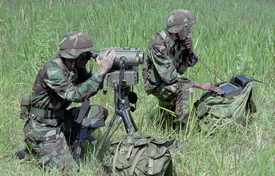
Posted by John Keller
Here's an interesting dilemma: how can people see the spot of light produced by a laser target designator in broad daylight? The answer is they often can't, and that isn't good.
The problem has little, if anything, to do with potential weapons malfunctions. Laser-guided munitions are extremely good at following a laser beam to the target, and have been for nearly decades. The problem is making sure the laser is illuminating the right target.
The U.S. Air Force uses forward-observers on the ground to confirm to combat pilots by radio whether the aircraft are illuminating the correct targets. It can happen that laser designators light up the wrong targets in the confusion of battle and complicated city skylines.
Now consider this: broad daylight can overwhelm even visible laser spots, not to mention eye-safe lasers not visible to the naked eye. When that happens, ground observers can't help the pilots, and that could lead to politically devastating collateral damage, especially if allied munitions hit schools, hospitals, or wedding receptions.
This is a dilemma that the military and the electro-optics industry are coming to grips with right now. Those involved in the electro-optics industry reported at the Photonics West trade show this week that military officials have been contacting them lately with this problem. Although it doesn't look like formal programs are in progress yet, plenty of smart folks are thinking about ways to deal with it.
For some, the solution may simply be an easy modification to night-vision devices that ground observers use. By adding some filtering, these goggles and binoculars might be able to eliminate all light except the wavelength of the laser in use. No sunlight, no reflections, just a nice clean laser spot.
That might not solve the entire problem, however. Some ambient light has to make it through the filter so ground observers can see the target as well as the laser designator spot.
Other people are looking at aircraft-based forward-looking infrared sensors to extend focal plane array sensitivity to a broadening light spectrum to let in just the right amounts of light, and ignore the kinds of light that cause confusion.
Any way they slice it, this is a big problem. It looks like solutions, however, might be on the way.

Posted by John Keller
I gotta hand it to Raytheon Co. They sure know how to spin off technology for a surprising number of uses.
Look at everything Raytheon has done with its pioneering radar technology. First the company -- with help from its famous engineer Percy Spencer and his candy bar -- figured out how to use microwave energy from radar signals to heat food from the inside. Voilà! The microwave oven.
Microwaves also are the basis of nonlethal directed-energy weapons to control crowds. Some folks are even thinking up ways to use microwave energy to heat homes, although this approach has a lot of things to work out before it could be made feasible.
Now it gets even better. Aviation Week and Space Technology reports that Raytheon is starting to sell RF technology to help with crude oil extraction. Reports Av Week:
Raytheon is getting in on the oil boom. The defense electronics company has sold a radio frequency (RF) technology to multinational oil services giant Schlumberger Ltd., which hopes to use it to extract hard-to-reach oil deposits. The technology, developed jointly by Raytheon and CF Technologies, uses RF waves to heat shale underground and cause it to release deposits of thick crude that are known as "heavy" oil.
You realize what this is? Raytheon has found a way to wrap a massive virtual microwave oven around underground oil deposits to heat and liquify the gooey, tar-like crude enough to pump it easily out of the ground. Sure, they also use a lot of interesting chemicals to aid with enhanced oil recovery, but shoving a microwave oven down the well hole is a new one.
This gives a whole new meaning to the term Radarange. Thanks, Raytheon.
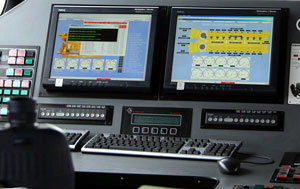
Posted by John Keller
New initiatives to equip U.S. surface warships with the latest computer and networking equipment clearly indicate that the U.S. Navy not only is starting to understand the notions of open systems and industry standards, but also is starting to get serious about this innovative way of procurement.
Perhaps the most important indicator is the Navy's Consolidated Afloat Network Enterprise System -- otherwise known as CANES -- which seeks to alter the Navy's currently unaffordable path of legacy applications and network acquisition in efforts to improve command, control, communications, computers, surveillance, and reconnaissance (C4ISR) capability.
Navy experts say they eventually would like to see a single suite of survivable common hardware able to host a wide variety of near-real-time combat support applications as they move forward with the CANES Common Computing Environment (CCE) network.
In addition, Navy leaders expect the CANES program to fall into line with commercial business information technology (IT) trends and move away from the traditional U.S. Defense Department integrated hardware and software stack legacy systems.
To my eye, this means that Navy technology experts plan -- often for the first time -- to follow trends in commercial industry IT trends rather than to specify the service's own unique computer and network architectures and standards. This may not sound like a big deal, but actually it's huge.
The Navy has a long history of unique, closed-system computer architectures going back to the shipboard UYK computers and airborne AYK computers. These systems -- although they often were adequate for their assigned tasks -- fell hopelessly behind the computing state of the art, and were difficult to upgrade.
Years ago the Navy tried to move toward open systems and industry standards with the Next Generation Computer Resources (NGCR) program, which sought to pick the best of industry standards and computer architectures. NGCR did not have a lasting big influence because it was not flexible enough to incorporate evolving technologies.
The CANES program, for which industry teams are forming now for a future series of competitions, sounds fundamentally different. It's a signal that the Navy will become a technology follower rather than application-specific developer, and will have the best shot it has ever had in crafting computer and network architectures that are easily maintained and able to accept rapid and frequent technology insertion and refresh.

Posted by John Keller
The history of warfare is filled with accounts of pitched battles where one side or the other -- sometimes both at the same time -- are on the ragged edge between stand and fight, or retreat fast and to live and fight another day.
Military commanders -- Robert E. Lee immediately comes to mind -- wrote that they could almost feel the opposing side ready to break and run under the onslaught of a determined infantry attack. It is that moment of decision -- fight or run -- that has been the key to many a military battle.
Sometimes all it takes is one panicked soldier to start a stampede to the rear, creating an uncontrollable rout and likely defeat. It is for good reason that throughout history, military leaders have gone to great lengths to make their fighting forces stick to their guns.
NCOs in the British Army of the 18th and early 19th centuries used to roam the firing lines just behind the infantry formations while carrying wicked-looking weapons called halberds, which had axe heads and a sharp pike in the middle (see accompanying photo). Anyone who ran would get the spear, and soldiers knew that to panic and run meant certain death.
Commanders throughout the ages have done their best to induce opposing troops to panic and run. Stonewall Jackson ordered his men to "yell like furies," which they did, inventing the Rebel Yell in the process. Union soldiers used to roar like trains. Sometimes it worked, and sometimes it didn't.
Today, U.S. military researchers are trying to do the Rebel Yell one better by uncovering the precise chemical scent of fear, according to a story on the Wired Danger Room blog entitled Pentagon Explores 'Human Fear' Chemicals; Scare-Sensors, 'Contagious' Stress in the Works?
Now, the US Army is trying to track down and harness people's smell of fear. The military has backed a study on the "Identification and Isolation of Human Alarm Pheromones," which "focused on the Preliminary Identification of Steroids of Interest in Human Fear Sweat." The so-called "skydiving protocol" was the researchers' method of choice.
Imagine a weapon that literally could spread the smell of fear among fighting forces on the ragged edge between fight and flight. It could tip the course of battle.
It will take much more research to isolate these chemicals, and then to create the sensors, delivery systems, and protective clothing to get the fear weapon into the field.
If the research comes to fruition, however, might international authorities outlaw fear weapons on the basis of chemical weapons treaties? I'm almost afraid to ask.
Posted by John Keller
I do try to use this blog space for matters of defense and/or aerospace issues, but now and then -- when I just can't take it anymore -- I shall utilize it to rant to the outer edges of sanity about some of the things that drive me just bloody, absolutely nuts.
Today's rant involves everyone out there -- even occasionally my own writers, fer crissakes -- who substitute the word 'utilize' for the exceedingly good, short, clear, and concise word 'use.'
Let me be clear: utilize is not a synonym for use, and you can't treat it as such. Some people think it is, and in their misguided, futile attempts to make themselves sound smart, write utilize where the word doesn't fit at all. Those who do this, in my book, succeed only in making themselves sound not only stilted and stand-offish, but ignorant as well.
Here's how it works: 'use' means to employ for some intended purpose. The key word here is intended. Utilize, on the other hand, means to employ for some unintended purpose. It sounds like a subtle difference at first glance, but it really isn't.
I may use my laptop computer in the library, for example, to write a story, update a spreadsheet, or play a quick game. If I get sleepy, however, I may curl up in a quiet corner and utilize my laptop as a pillow.
I may use the dime in my pocket to help pay for bus fare, yet I may utilize a dime as a screwdriver when I get home to fix that loose mailbox. Speaking of screws, I may use a screwdriver to fix the loose mailbox if I've used my last dime for bus fare, but I may utilize the handle of the screwdriver as a hammer to tap the mailbox back into place before I turn the tool around to tighten the offending screw.
Would it make sense for an engineer to utilize an EDA tool to help him design a complex integrated circuit or system on a chip? Certainly not. In fact, to suggest so would devalue, almost insult, the EDA tool in question, as well as belittle its manufacturer. PR people, think about that the next time you write a press release.
I know there are plenty of people who might go to references like the dictionary, look up use and utilize, and argue that the two words are interchangeable. You could do that, but I'll judge you to be incorrect.
Substituting the word use for the word utilize does not add variety by employing different synonyms; it's just plain wrong.
I know the technical writers and public relations people out there want to sound intelligent, but they ought not to attempt this by confusing these two clearly different, yet useful words.
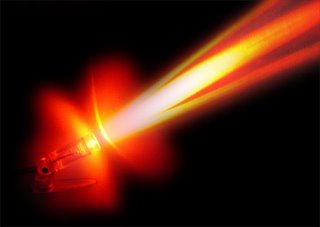
Posted by John Keller
When the smoke cleared after the American Civil War, many an army veteran on both sides made his way home while missing a hand, an arm, or a leg. It was the logical byproduct of weapons technology of the day, before metal-jacketed ammunition had been invented.
The standard .58 caliber Springfield musket fired a bullet of soft lead weighing an ounce and a half. It hit with tremendous kinetic force, started flattening out when it met resistance, and splintered bone beyond repair with grisly efficiency.
Look at the postwar photographs, and you'll see many crutches and empty sleeves. The prosthesis industry -- artificial limbs -- got a big boost after the war (I almost wrote 'got a shot in the arm,' but that would be a poor choice of words) as former soldiers maimed in the war sought to live normal lives.
I've often thought that veterans of future advanced-technology wars might head home with arms and legs largely intact, but suffering from blindness in large numbers. This condition, too, might be the logical byproduct of future optical warfare where battlefield lasers play a huge role.
U.S. military researchers are trying to develop a portable high-power laser known as the "laser crazer" that uses terawatt-class lasers fired in extremely short pulses that are designed to pit and scratch glass lenses in missile seekers, night-vision equipment, and other optical systems to destroy system effectiveness, reports Wired magazine in a story by David Hambling entitled Camera Shy? Pentagon Builds a Portable Lens-Destroying Laser. Reports Wired:
... the so-called "laser crazer" is designed not to burn up missiles or tanks, but to scratch lenses. It's a portable nonlethal weapon designed to take out enemy optical systems at long range -- ruining an adversary's night-vision gear, sniper scopes and binoculars in a fraction of a second -- by sandblasting their lenses with ultrashort pulses of laser light.
Hambling expands on his story in an item on Wired's Danger Room Blog entitled New Sensor-Blasting Laser: Blinding Brilliance? by speculating that laser crazer technology might be used to blind -- not confuse, but blind -- air-to-air and surface-to-air heat-seeking missiles.
This technology is quite destructive to the glass lenses of optical devices. According to Hambling it "has a peak power of more than a million megawatts, so intense that it warps the air around it. When the beam strikes the target it vaporises the impact site, producing a plasma fireball and a highly destructive shockwave. The end result: a tiny crater barely visible to the naked eye."
It's not lost on me that the naked eye also is an optical lens of sorts. Imagine what a laser crazer would do to the human eye. Now visualize the blind coming back from war. It's not much of a leap.

Posted by John Keller
Vetronics coverage in publications like ours usually involves the big, powerful, complicated stuff like the M-1 Abrams main battle tank and the M109 self-propelled howitzer. You can hardly blame us; not only do these vehicles have advanced electronics, but they make a lot of noise, fire, and smoke. What could be more compelling?
Sometimes we cover the less exciting vehicles and their electronic systems. Today's lead story, for example, concerns the new Medium Mine Protected Vehicle (MMPV), which is designed to withstand blasts from improvised explosive devices.
Rarely, however, does our vetronics coverage extend to armored vehicles like the combat earth mover, and for this omission we freely acknowledge our negligence. Usually only military branches like the Army Engineers and the Navy Seabees learn much about combat construction vehicles, but I recently stumbled over this story that I have to share.
It's about the High Mobility Engineer Excavator (HMEE) from JCB Inc. in Pooler, Ga., which is set for duty in Iraq and Afghanistan. I can see how we might overlook a combat vehicle like this, since its most sophisticated vetronics is limited essentially to its ABS braking technology and computer diagnostics. Its vetronics, however, is not the most notable aspect of the MMPV. I'll tell you what is ...
... this is a backhoe that can go 60 miles an hour, not only on paved roads but cross country as well. If you don't believe me, take a look at the accompanying video, which features a drag race between the HMEE and a civilian backhoe. The race isn't even close, and it's easy to see why JCB has won a $209 million U.S. Army contract to build 800 of these armored construction vehicles for front-line duty.
Any kidding aside, combat vehicles like this -- believe it or not -- in the near future could become important weapons against terrain-following cruise missiles, which are programmed to follow known land features as guides to their targets.
When we think about missile defense, what most quickly comes to mind? Laser defenses, electronic jammers, even air-to-air missiles. What happens, however, if those defenses either cannot be brought to bear, or would be ineffective?
Think outside the box. Need to spoof a terrain-following missile? How about changing the terrain? In those terms, what better weapon would we have than an HMEE that's able to lift more than 2.2 tons, dig a depth of almost 13 feet, and move as fast as 60 miles an hour in battlefield conditions?
Get rid of a little hill here, add another one there, and dig some curvey trenches that look like gullies and you could have a bunch of very confused cruise missiles.
Sometimes perhaps the low-tech approach might be best. It's worthwhile to think about that once in a while.

Posted by John Keller
I've often thought that defense technology, like my wingtip shoes, never really goes out of style. As silly as that statement sounds to many of us, however, there evidently are plenty of people who would argue the point.
Who hasn't had the watercooler conversation about the supposedly dwindling need for major military platforms like the F-22 Raptor advanced tactical fighter, the Seawolf-class fast attack submarine, and the upgraded M-1 Abrams main battle tank? Here's the argument: we're arrayed against unconventional, non-state forces of terrorism. Who needs these powerful systems anymore?
The argument goes on: The forces of terrorism are decidedly low-tech -- human couriers, cell phones, garage-door-opener triggers for roadside bombs. The best way to fight low-tech is with low-tech, and facing these guys we could save a bundle on defense.
This has always made me nervous. We've seen this type of reasoning before. Remember military initiatives a generation ago to win the hearts and minds of the Viet Cong? Look where that got us. You don't win shooting wars by building recreation centers. I've been called a warmonger for saying less than that, but so it goes.
The low-tech approach for the military has been discussed since even before 9/11 -- all the way back to the crumbling of the Berlin Wall. When the military talks low-tech, they often cloak it in rhetoric concerning a switch from heavy to light forces -- frigates instead of cruisers, wheeled vehicles instead of tracked armor.
Whenever I hear this I can't help thinking that the U.S. military won't be fighting terrorists forever. What about China and a resurgent Russia? No one wants to think about it, but what about the potential for armed conflict in Europe or Asia? Are we really serious about going toe-to-toe with the new Russian T-95 main battle tanks with Humvees and Light Armored Vehicles?
Yesterday I read a piece in The New York Times by U.S. Air Force Maj. Gen. Charles J. Dunlap Jr. that made me feel a lot better. Not only does Dunlap point out the continuing need for an advanced-technology military to cover emerging conventional threats, but he also makes a convincing case for the value of military technology in the unconventional war on terror. "The lesson of Iraq is that old-fashioned force works," Dunlap writes. In an article entitled We Still Need the Big Guns, Dunlap says:
And while the new counterinsurgency doctrine has an anti-technology flavor that seems to discourage the use of air power especially, savvy ground-force commanders in Iraq got the right results last year by discounting those admonitions ... Nonetheless, fans of the counterinsurgency manual are using it as a bludgeon against anyone who wants to plan to fight the next war rather than the last one. Their line of thinking holds that our next war will be a replay of Iraq, and thus most of our armed forces should be structured for counterinsurgency. But this ignores other potential threats. Should we simply wish away China’s increasing muscle, or a resurgent Russia’s plans for a fifth-generation fighter that would surpass our top of the line jet, the F-22 stealth fighter? Moreover, does anyone really believe that creating corps of civil affairs officers will deter North Korea or Iran?
Dunlap rightly points out that gearing military forces to fight the forces we face now essentially is looking backwards, not forwards. The world changes fast, and we will continue to need a high-technology military to meet what comes. Writes Dunlap:
Looking ahead, America needs a military centered not on occupying another country but on denying potential adversaries the ability to attack our interests. This is not a task for counterinsurgents, but rather for an unapologetically high-tech military that substitutes machines for the bodies of young Americans.
A senior military leader who doesn't go in for fleeting fashion trends. I'm glad we still have those around.
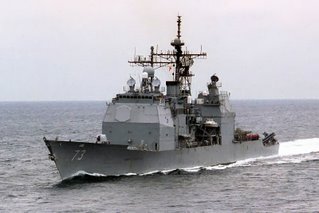
Posted by John Keller
Last spring and summer, an electro-optics company in Westborough, Mass., called RemoteReality Corp. was after me in a big way to talk about a piece of 360-degree optical surveillance technology. It sounded to me like just another perimeter-security application for parking lots and warehouses, so I wasn't in much of a hurry to get the story.
Boy was I wrong, as it turns out, and last Sunday's standoff in the entrance to the Persian Gulf between five Iranian fast attack boats and the U.S. Navy cruiser USS Port Royal, destroyer USS Hopper, and frigate USS Ingraham showed me just why.
Yet early last summer the real importance of the RemoteReality electro-optical system was lost on me. Despite my confusion, James Ionson, RemoteReality's CEO, kept pressing me about the system called OmniAlert360. I asked him straight up if this was just another surveillance camera. He said it definitely wasn't, and that it might involve shipboard surveillance. Because of confidentiality agreements, he couldn't say much more.
The OmniAlert360 has a special kind of mirror that captures a 360-degree field of view, corrects for optical aberrations, and can move the mirror's images to a CMOS sensor for further electronic processing. Sure, it sounded interesting, but why the sense of urgency?
Finally late last July, Ionson could tell me more of the story. RemoteReality was providing the OmniAlert360 to Lockheed Martin to integrate into the Fast Inshore Attack Craft (FIAC) Defense System, which can extend the defensive perimeter of most naval vessels out to five miles to counter the threat of swarms of small attack boats.
This sounded a lot more interesting, and we wrote about it. Still, it wasn't until I saw the news reports Monday morning that I could slap my forehead and sigh, 'well, duh!' Sometimes I can have a mind like a steel trap.
On Sunday five armed Iranian patrol boats that can whoosh over the water at 60 miles an hour (video here) started playing chicken with the three Navy warships in the Strait of Hormuz. Radio traffic from the Iranians reportedly threatened to blow one or more of the ships up. Some of the boats evidently dropped floating boxes into the water ahead of the Navy ships. The task force was within seconds of opening fire on the Iranians before the fast attack boats broke off the engagement.
Subsequently, I read in Wired's Danger Room blog just why the Iranians might have approached the Navy warships, and what it might mean for the future. Sometime soon we might see not just five fast Iranian attack boats but as many as 100 of them at a time engage U.S. warships or cargo vessels from every point of the compass. Right now they're trying to learn our tactics and probe for vulnerable spots.
An attack of 100 fast boats would be extremely hard to defend against ... unless the threatened vessels could detect the attackers from at least five miles out, bring their onboard weapons to bear quickly, and call in air support. That would even the odds. I get it now ... and Jim Ionson, I'm sorry I was so slow on the uptake.
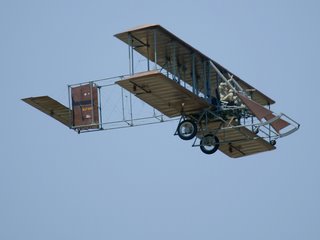
Posted by John Keller
I had a fascinating conversation with a signal-processing expert at Analog Devices yesterday. It seems we may be reaching the stage where innovation is not limited by technology any longer, but by the vision of the folks designing the systems.
For so long, systems designers have had to work within the constraints of whatever is the state of the art in technology, and nearly always fall short of what they might actually want to achieve. That's not so much true anymore, says Dr. Mike Coln, division fellow of precision converters at the Analog Devices Inc. signal processing group in Wilmington, Mass.
"What is possible on silicon these days is fairly impressive," Coln says. "There are many cases where the limitations in the sorts of products you can build, and the opportunities you can serve, are not so much in silicon, but constrained by the vision of the people designing those products."
That sounds like we've reached the stage where if you can dream it up, you can build it, with not too many technological hurdles getting in your way.
One thinks back to the Wright Brothers, who for all their lives undoubtedly gazed at birds and flying insects, and struggled mightily to develop rudimentary technology necessary to emulate them. They came up with wood, wire, fabric, and a noisy engine. It was barely just good enough.
Now advanced aircraft developers can build robotic insects and birds. It is truly amazing, at the expense of sounding gushy, how far technology has advanced in the hundred-odd years since then. More to the point, it's amazing the technological advantages that today's systems designers have -- how spoiled they really are.
If you can imagine it, you can build it -- no matter how complex. If only Wilbur and Orville knew.
But the story doesn't stop here. In fact, it's the beginning of a whole new volume that begins something like this: if technology is no longer the biggest challenge to innovation, then the very imaginations of the systems designers become our biggest limitation. "Now it is people issues, as opposed to engineering issues," Coln says.
How to break through these new limitations? "We need better partnerships between people like me and the people in the systems-integration community," Coln says. "That's my call to arms. By partnering with their suppliers, the integrators discover the overlap between what is possible and what is worthwhile. They are not aware of what we are truly capable of doing, and we are not aware of the challenges they face."
Perhaps as we move forward into the 21st century, these imagination limitations, as opposed to technological limitations, will give rise to new business practices and systems-development models that could redefine what we know as inter-company competition.
I'm not sure exactly how something like that might come about, but the results could be worthwhile. All we have to do is imagine it.

Posted by John Keller
It all began with a melted candy bar.
Noted Raytheon Co. engineer Dr. Percy Spencer in 1945 was doing some research into the new technology of radio direction and ranging -- better known as radar -- at a company lab in Waltham, Mass. As he tested a new vacuum tube called a magnetron, he noticed that a candy bar he had in his pocket had melted.
Following a hunch, he applied energy from the magnetron to popcorn, and later to an egg (the popcorn popped, the egg exploded). He realized that this new device heated food from the inside, and the microwave oven was born (remember the Radarange?).
Radar technology was the genesis of a household appliance so common that today it outsells gas ranges. We don't use them to melt candy bars anymore, but who could be without one to defrost a pound hamburger and heat up that tepid cup of coffee?
Today microwave technology is being used to develop so-called "non-lethal" weapons popularly known as the "pain ray," which can heat a person's skin to uncomfortable levels, but cause no lasting harm. This kind of weapon likely to be used for crowd control, driving off intruders, and similar applications.
Dr. Spencer's discovery of how to harness microwaves for heating isn't stopping there, however. Now scientists are considering ways to use that same radar technology to comfortably warm people in their homes during cold weather, reports David Hambling in Wired's Danger Room blog.
Says Hambling in his story headlined Pain Beam: Central Heating Of The Future:
The temperature may be below zero, but you're not about to adjust the thermostat. Even in a light shirt, you're warm and comfortable – even if your breath does form an icy plume. Why? 'Cause you've got the energy-efficient heating system of the future: millimeter waves from your domestic Active Denial system -- or, as we've come to call it, the pain ray ... microwave heating systems could cut household heating bills by 75 per cent. And since microwaves cause light bulbs to fluoresce, such a heating system could also double as the power supply for a system of wireless lights.
Such a system is far from practical use, however. As Hambling's story points out, people are generally very cautions about microwave energy, and might be hesitant to turn their homes into giant low-power microwave ovens. I can just hear a kid up in his bedroom shouting, "I'm cold; turn up the nuker!" Watch out. If mom or dad turns it up too high it just might melt the candy bar in his pocket.
I live in New Hampshire where the winters can get really cold. I'm not sure if this approach could prevent pipes from freezing, and I don't know about the effect of cold on those widescreen LCD flat-panel TVs and small appliances like iPods.
Yet stranger things have happened, and adventurous scientists should continue looking into this approach. At one time we never thought that radar would power our ovens, any more than we believe now that our microwave ovens could ever heat our homes.
Among the most consistently pondered questions in our community is how will the presidential election influence the military and aerospace business -- more to the point, how strongly is the next president most likely to support advanced electronics and electro-optics technologies?
Well, the presidential election is off to its official start, and the clearest message we can take away from the Iowa Caucuses last night is this: we all had better start paying attention, because the traditional bets may be off.
Early on, the smart money was on a November election race between Democrat Hillary Clinton and Republican Rudy Giuliani. They have name recognition, plenty of money, and reasonably accessible track records. Rudy, we can reasonably predict, would be a big friend of defense technology development. Hillary, perhaps not so much. Easy choice, eh?
Now look at what happened in Iowa yesterday. The November contest still could come off as originally predicted, but the odds on that are getting longer.
In Iowa, Republican Mike Huckabee was the clear winner with 34 percent of the vote to second-place finisher Mitt Romney's 25 percent. Giuliani didn't campaign in Iowa and got only 3 percent of the vote. Meanwhile Democrat Barack Obama won the caucuses with 38 percent of the vote, while second-place finisher John Edwards got 30 percent. Clinton actually came in third with 29 percent of the vote. Whadaya think of that?
I have to admit that I haven't been taking Huckabee very seriously. I'm not sure I should start doing so yet -- I think we'll know after the New Hampshire primary on Tuesday -- but obviously it's time to see how Huckabee stands on defense spending.
Apparently a Huckabee presidency would be beneficial for defense spending and the defense industry. In an interview last March, Huckabee suggested to Real Clear Politics that perhaps the U.S. is not spending enough now on defense. Said Huckabee:
... we never entered this engagement in Iraq with the level of resources that the Department of Defense said we needed in order to really bring stability there. I think that is a concern. My concern is that if you're going to do this we need to do it with all the resources possible. Here's a concern: we spend 3.8% of GDP right now on defense. That is less than any time since the end of the Cold War in terms of a percentage of spending. We've never spent that small amount of our GDP during a shooting war. You have to wonder, are we trying to do too much with too little?
Certainly this is not an outright declaration to put more into defense if elected, but at least it is not an outright reason for worry.
When we take a look at Obama, likewise there are no overt reasons for concern. In an address to the Chicago Council on Global Affairs last April, Obama in prepared remarks said:
We must lead by building a 21st century military to ensure the security of our people and advance the security of all people ... The first way America will lead is by bringing a responsible end to this war in Iraq and refocusing on the critical challenges in the broader region ... The second way America will lead again is by building the first truly 21st century military and showing wisdom in how we deploy it ... Our men and women in uniform are performing heroically around the world in some of the most difficult conditions imaginable. But the war in Afghanistan and the ill-advised invasion of Iraq have clearly demonstrated the consequences of underestimating the number of troops required to fight two wars and defend our homeland. That’s why I strongly support the expansion of our ground forces by adding 65,000 soldiers to the Army and 27,000 Marines.
Obama at least has voiced support for the military and for building up and maintaining fighting forces in terms of manpower and technology. We need to bear in mind that Obama opposes the war in Iraq, and has pledged to bring the troops home if elected. He hasn't mentioned if he might change his mind if U.S. military successes on the ground continue.
We also need to bear in mind that as a Democrat Obama will be under intense pressure to pursue costly domestic programs like universal health care, which could distract from military technology development.
All said, a potential election of Huckabee or Obama as president would not portend disaster for the military, or for the defense and aerospace industry.
Like I said, we'll know more Tuesday after New Hampshire. I happen to live and work in New Hampshire, so I'm hunkering down for a weekend of traffic jams, a mailbox stuffed with junk mail from the candidates, and don't even talk to me about the never-ending phone calls during dinner. My wife got caught in a traffic jam behind Hillary's campaign bus today at lunchtime, so I'm girding for more of the same.
Wish me luck.
Posted by John Keller
Next time you're out at the airport, you had better watch your facial expressions, because the Transportation Security Administration (TSA) will be, too.
The TSA reportedly is sending out to dozens of major airports across our nation "teams of TSA behavior-detection officers specially trained to discern the subtlest suspicious behaviors," according to a story that appeared last week in the Seattle Post-Intelligencer.
TSA officials will not reveal specific behaviors identified by the program -- called SPOT (Screening Passengers by Observation Technique) -- that are considered indicators of possible terrorist intent. But a central task is to recognize microfacial expressions -- a flash of feelings that in a fraction of a second reflects emotions such as fear, anger, surprise or contempt, said Carl Maccario, who helped start the program for TSA.
The story, headlined Airport profilers: They're watching your expressions, is by P-I reporter Paul Shukovsky. TSA officials can ask a few questions to gauge facial expressions and, hopefully, weed out potential terrorists. I was alerted to the story by Slashdot.
I have to admit that news like this makes me a little nervous, but not for what you probably think. I could lecture on here about privacy, human rights, and the evils of government invasiveness, but that's what the Democratic Primaries are for, and like me you've probably had your fill. Confidentially, if we can nab terrorists at airports by their nasty facial expressions, I'm all for it.
No, what I'm worried about is me.
I'm trying to remember the last time I was standing in any line in any airport when I wasn't really PISSED OFF about something. I can't recall even one time. All I can remember are the different levels of distress, frustration, anger, exhaustion, and anxiety that are the delights of modern air travel.
I can't imagine what my airport facial expressions have been, but I know this isn't good. According to the Post-Intelligencer story, TSA officers ask simple questions like "How are you today?"; "Where are you heading?"; and "Is this all your property?" It's how passengers respond that makes all the difference (check out the comments to this story).
If one of these guys catches me at a perfect moment, well I shudder to think.
"How are you today"
"Aw, fer crissakes, I don't think you really want to know."
"Where are you heading?"
"Please, God, just get me home! I'm begging you, just get me home!"
"Is this all your property?"
"It's looking like it. I can't even remember WHERE I live anymore."
Well, maybe they'll cut me some slack. Then again maybe the next blog you read from me will be datelined Guantanamo Bay. Nonetheless, I think we're all ready to find out.
Some people have a poker face. Others put on their game face. Now I think we need to add the airport face to our repertoires. It could make the difference between getting home on time and experiencing a very long delay.
Stay tuned for future accounts of travel nightmares. We'll give you all the gory details. Feel free to share yours with us.
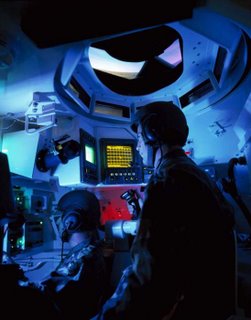
Posted by John Keller
For a long time now, U.S. military technology developers have been lying awake at night thinking about how to counter the low-tech threat: improvised explosive devices (IEDs), cell phone-carrying informants, garage door-opener triggers, and unguided rockets. It's been a long time since we talked seriously about the kinds of advanced-technology military threats that we did 10 or 20 years ago.
Yet lately I'm starting to feel like it's deja vu all over again. Look at the news reports from Russia. New ICBMs, advanced theater ballistic missiles, and modernized surface warships on exercises where they can be seen up close.
It's beginning to feel a lot like the '80s. I remember those days well when I was a cub reporter in Washington covering the Pentagon and Capitol Hill, with Ronald Reagan in the White House talking about the 'Evil Empire' and singing the praises of Rambo. Those were the days when we all looked forward to that annual Pentagon press conference where senior officers released what I called the 'Scare Book' -- the slick, four-color booklet called Soviet Military Power.
Ah, those were the days of the advanced-technology threat; no IEDs for us. That booklet is where we learned about the Soviet Typhoon-class ballistic missile submarines, SU-27 Flanker jet fighters, Kirov-class cruisers, T-80 main battle tanks, Akula-class attack submarines, and anything else in the Soviet inventory that would scare us half to death.
Now I'm wondering if the Scare Book will be resurrected anytime soon. I just read the other day in Defense Update.com about the newest Russian main battle tank, the T-95, which is supposed to enter service in 2009. I got the same shiver I used to get reading Soviet Military Power when I saw the story:
In 2009 the Russian Army is scheduled to receive a new main battle tank, claimed to be superior to existing designs. The new tank will introduce a new hull, power plant and drive train. It will also have improved firepower, comprising of new armament, target acquisition, fire control and surveillance systems.
It sounds like the folks in the vetronics lab at the U.S. Army Tank-Automotive Command outside of Detroit have their work cut out for them. The same goes for the scientists at General Dynamics Land Systems in nearby Sterling Heights, Mich., as well as tank designers in Israel, France, Germany, and elsewhere. It looks like there's about to be a big, tough, new kid on the block, and anyone concerned with tanks and other armored vehicles had better start thinking about it.
It's been quite a while since main battle tanks were the prime topic of discussion. I remember when the Army's M-1 Abrams tank was the toughest tank around. That was -- well, it must have been back in the '80s.
I think the next generation of tanks will have to be unlike any other. First, the new tanks must rely on much more than just their armor. They'll have to be fitted with advanced vetronics like active air defenses capable of shooting back at fast-moving attack helicopters and strike fighters. They'll need sophisticated electronic warning systems, and advanced optical targeting systems that will help them get off the first shot.
Many other changes will be in store, as well. We'll see if the next generation of main battle tanks will be manned, unmanned, or a combination of both.
One thing is clear, however. It's time, once again, for the tank designers to get busy.
